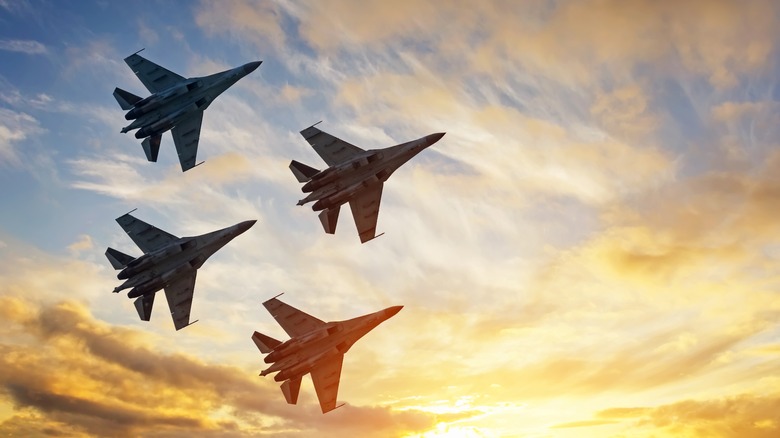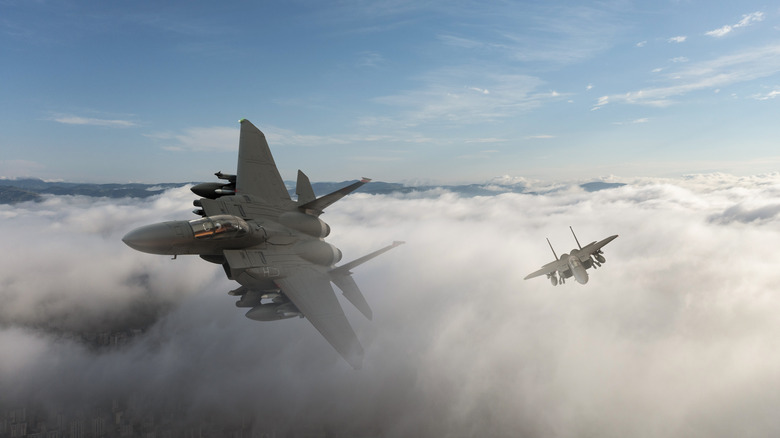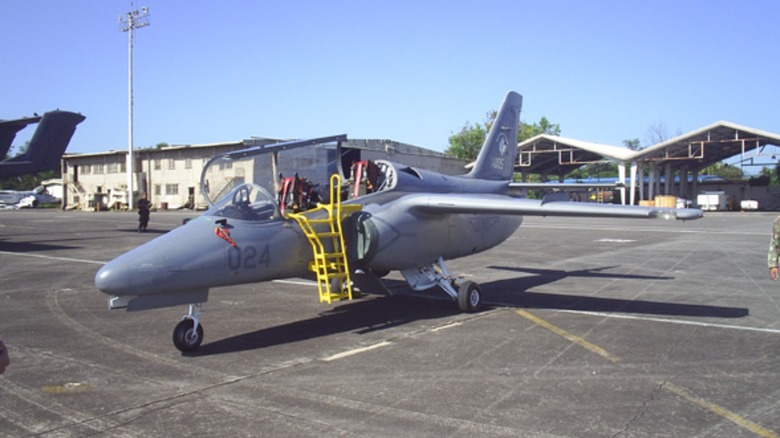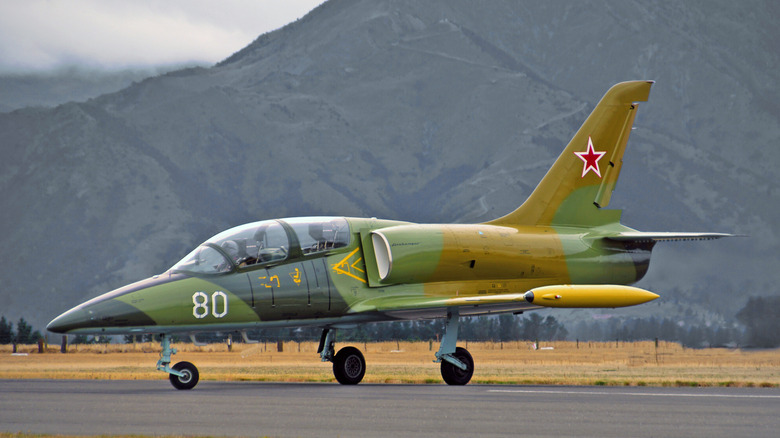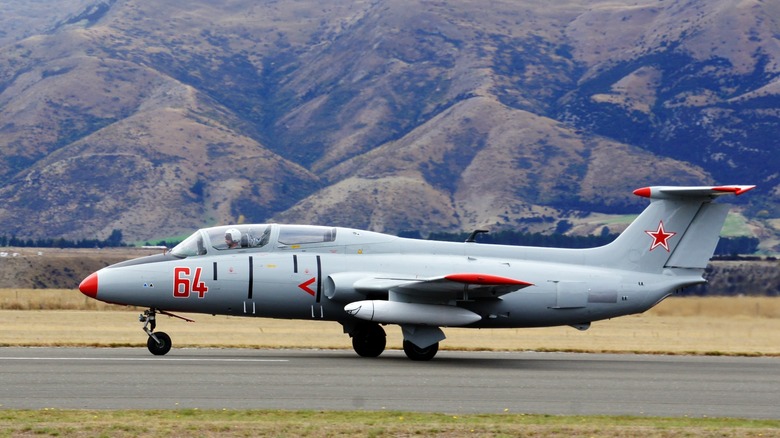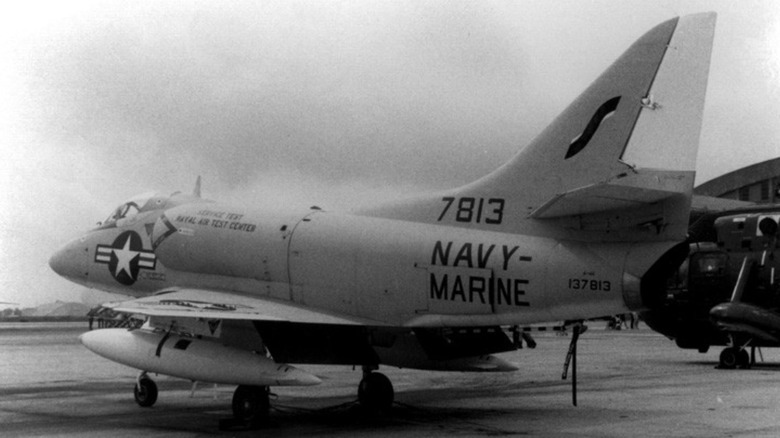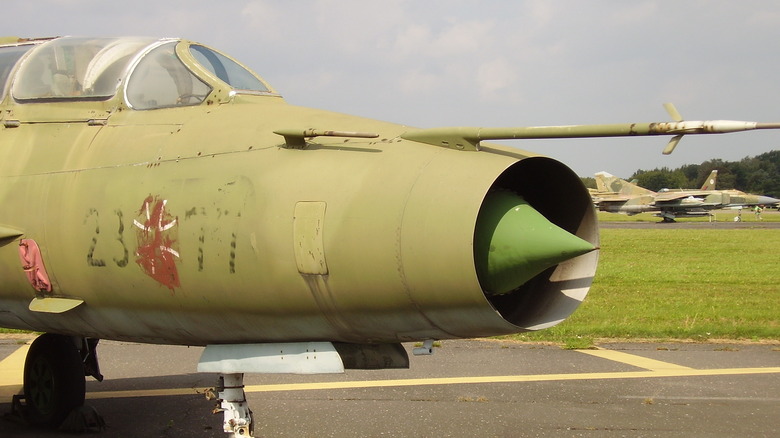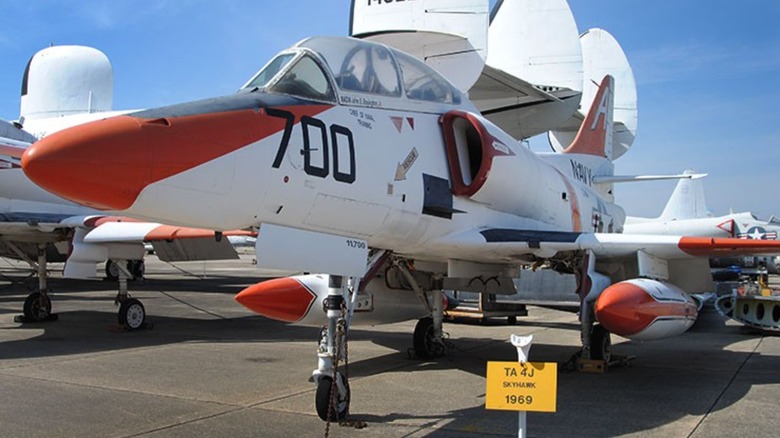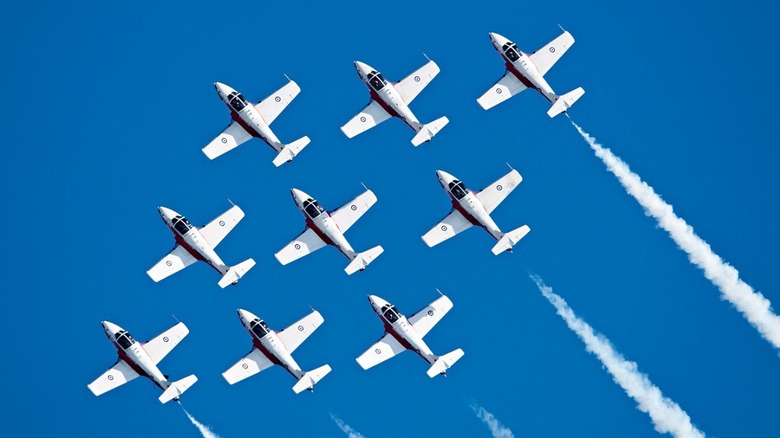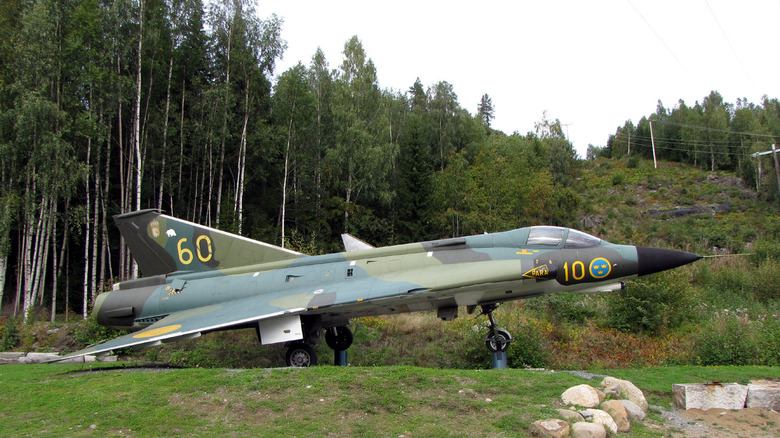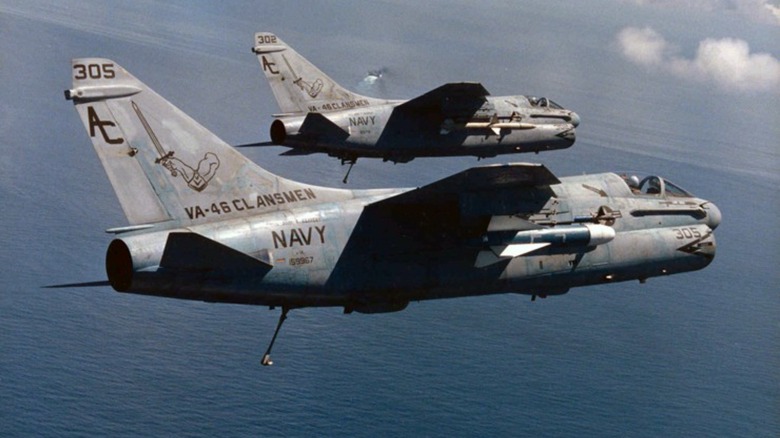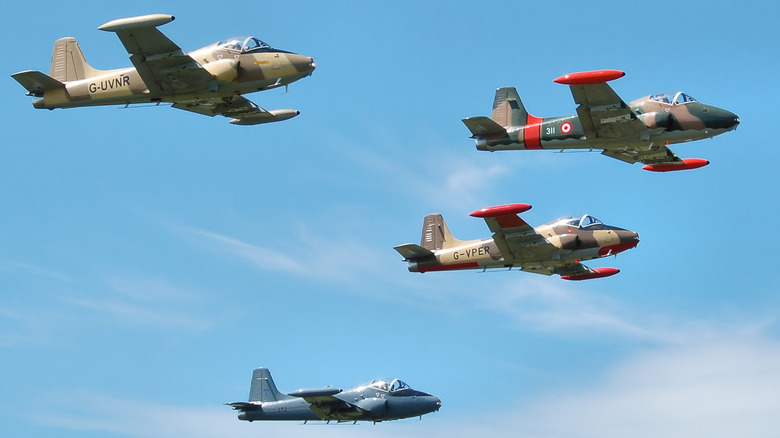10 Fighter Jets You Can Actually Buy (And How Much They Cost)
For many aviation enthusiasts, riding in or piloting one of the most iconic fighter jets ever built is the ultimate airborne adventure. A fighter jet is any aircraft powered by at least one jet engine and designed for military operations, particularly air-to-air combat. They differ from ordinary aircraft in terms of armaments (guns and bombs), but also in terms of speed, maneuverability, and stealth.
In the strictest sense, a civilian pilot can't buy a fighter jet, because it's against the law to own one still capable of combat operations. However, you can buy a jet that used to be a fighter and is now enjoying its retirement. Fighters, also known as warbirds in the aviation community, sometimes go up for sale when a model becomes outdated and there are surplus aircraft remaining.
Warbirds are always demilitarized before they can be sold to a civilian pilot or collector. Any weapons systems or sensitive instruments will be removed before it arrives in your hangar. If you've got the cash for the initial purchase and the upkeep, you can find warbirds for sale on many online marketplaces including Hangar 67, Controller, Trade-a-Plane, and Aero Trader. Just make sure you know what you're getting yourself into.
Costs and considerations
Not only are warbirds readily available on the secondary market, civilian pilots are even allowed to fly them, provided they have the appropriate training. Of course, maintaining a high-performance aircraft isn't cheap. Warbirds range in price between tens of thousands of dollars and several million dollars, depending on the year, type, and condition. And sometimes the initial sticker price is the cheapest part — after all, these are some of the most iconic airplanes in aviation history, and that privilege comes at a premium.
Before you can fly your new toy you're going to have to shell out for inspections, which can cost as much as the aircraft itself. Then there's regular maintenance, hangar fees, and fuel costs, all of which are expensive. Once you're ready to fly, the hourly cost to fly these machines is measured in tens of thousands of dollars per hour.
Unless you're planning to stick your plane in an oversized garage somewhere just to look at it, you're signing up for an (admittedly cool) lifelong expense. Tom Cruise may have his own fleet of planes, but if you're not as rich as him, bear that in mind before you pull out your credit card — Warbirds are not for the faint of heart. If you're committed to getting one of your very own, here's a sampling of what's out there, presented in no particular order.
SIAI Marchetti S-211
The S-211 was developed by Italian company SIAI-Marchetti in 1976 and the first prototype was flown five years later. Since then, approximately 60 have been produced and sold to world military entities in Singapore, Haiti, and the Philippines.
It features a double-cockpit setup with seats for a student pilot and a trainer. The front and rear cockpits are completely duplicated so that either pilot could take control of the flight and the rear cockpit is raised to offer better visibility. In addition to training, the S-211 was equipped with hard ports for mounting armaments, surveillance equipment, or other instruments, making it capable of providing close air support during combat.
Powered by a Pratt & Whitney Canada JT15D turbofan jet engine, the S-211 can reach a subsonic never exceed speed (the absolute maximum speed the aircraft can safely operate at) of Mach 0.8. Today, there are a dozen or so S-211's in civilian hands and this one could be yours for $975,000.
Aero L-39C Albatros
The Aero L-39 Albatros was produced by Czechoslovakian company Aero Vodochody and first flown in 1968. Since then, it has become the most used trainer jet in the world with approximately 2,800 having been produced and placed in service. The Albatros was the first turbofan-powered trainer aircraft ever produced, designed as a replacement for the L-29 Delfin. It has been used by 30 different air forces around the world.
The training variant had ports for practice weapons but the light attack version had four hard points for armants. Now, the L-39 is being replaced by updated versions and totally new planes, and the older models are finding their way into private hands. In fact, they've been available to civilian pilots since the '90s and their relative availability makes them one of the most popular choices among warbird enthusiasts.
In addition to seeing combat, you might have seen the Albatros on the silver screens in movies like "Tomorrow Never Dies" and the recent blockbuster "Top Gun: Maverick." Whatever high-flying fantasy you want to relive, whether fiction or historical, the Albatros is the perfect plane for it. You can put yourself in the cockpit of one for $875,000.
Aero L-29 Delfin
The L-29 Delfin (Czech for dolphin) was designed and developed by Czechoslovakian company Aero Vodochody in the '50s. The first prototype flew in April 1959 and it quickly became the most commonly used jet trainer in mid-century Soviet nations. Like many other commonly available warbirds, the Delfin was mostly used as a training aircraft and didn't come with any armaments in its standard format.
More than 3,000 were produced in a few variations. The most common was the standard L-29 which featured a double cockpit for a student and trainer to fly together. A streamlined version, dubbed the L-29A Akrobat ditched the rear cockpit and was used to train aerobatics. The L-29R replaced the rear cockpit with downward-facing cameras for surveillance operations, and advanced variants could carry gun pods, bombs, or rockets.
Today, you can find the Delfin, sporting its Motorlet M-701c 500 turbojet engine, in the hands of pilots all over the world and you could be one of them for the relatively low price of $79,000. This particular aircraft spent time in the Romanian Air Force, according to its listing, and has been in the hands of a private owner in the United States since 2020.
Douglas A-4 Skyhawk
The Douglas Skyhawk was first flown in 1954 and had a nearly 50-year service career before the U.S. Navy retired it in 2003. It was a single-seater jet intended to replace the Douglas Skyraider, designed to be a slimmer, more streamlined aircraft than its contemporaries.
It had a smaller than typical wing profile, allowing it to take up less of the valuable real estate aboard aircraft carriers, and its overall weight was considerably less. Despite its smaller profile, with the addition of drop tanks the Skyhawk was capable of nonstop long-range flights in excess of 2,000 miles.
Approximately 3,000 were produced between 1954 and 1979, and they were widely used during the Vietnam War. Five hard points could carry various armaments and instruments during combat operations. Approximately 195 Skyhawks were shot down during the Vietnam War, including one piloted by the late Senator John McCain, in 1967.
Off the battlefield, the Skyhawk was the symbol of the United States Navy between 1974 and 1986, when they were flown by the Blue Angels Navy Flight Demonstration Squadron, and the fighter jets featured in the original "Top Gun." It's one of the most storied fighters in military history and you could own one for $650,000.
Mikoyan MiG 21 UM
The MiG 21 was designed by the Soviet Mikoyan-Gurevich Design Bureau and had its first flight in 1955. More than 11,000 were built, making it the most-produced supersonic jet aircraft in history. They've been used by approximately 50 countries, and have the longest service run of any combat aircraft — in fact, the MiG 21 is the oldest fighter jet model still in service today.
The MiG 21 is no slouch in the air, with a top speed of just over Mach 2 at altitude and Mach 1 at sea level. Despite its supersonic capabilities, the MiG 21 is noted for its simple controls and high stability, making it appealing for lower-skilled pilots. That made it an easy sell to other nations with less-developed aviation programs as well as civilian pilots.
You can get your hands on a MiG 21 of your own for just $50,000, but this one won't be flying at Mach anything. This particular aircraft has been restored to static condition, meaning it has been aesthetically preserved but is not flyable. It has been on display in a museum for a number of years and is the sort of fighter jet that's perfect for an enthusiast with no intention of breaking the sound barrier.
[ Featured Image by RosarioVanTulpe via Wikimedia Commons | Cropped and scaled | CC BY-SA 4.0 ]
Douglas TA-4J Skyhawk
The TA-4J is a variant of the original Skyhawk first introduced in 1969. Where the original A-4 Skyhawk was a single-seat fighter intended for a single pilot, the TA-4J variant was a dedicated training aircraft with dual cockpits. In addition to the extra seat to accommodate a student and trainer, the TA-4J also lacked any weapons systems and had a milder engine system.
It has the longest-running service time of any Skyhawk variant and remained the standard training aircraft for the United States Navy until the '90s. It has all of the flash and flare of the combat version but with a demeanor that's a little friendlier to civilian pilots.
You could add a TA-4J Skyhawk to your personal airplane collection for a cool $3.2 million. This particular aircraft has just over a thousand hours of flight time, and is fully restored and operational. So, once you get past the debilitating sticker shock, you'll be ready to take to the skies pretty much right away. And the extra seat means you can take a friend with you.
Canadair CL-41G Tebuan
The Tebuan is more commonly known as the CT-114 Tutor. It was designed in-country for the Royal Canadian Air Force and was first flown in 1960. Only a couple hundred Tutor's were built, but the model remained in service until the turn of the millennium.
Approximately 190 Tutors were constructed for use almost exclusively as training aircraft or for aeronautics demonstrations. The Golden Centennaires flew a group of Tutors to celebrate Canada's centennial in 1967. Unlike many training aircraft of the day, which sported front and rear dual cockpits, the Tutor featured a side-by-side two-seat arrangement. In addition to the training aircraft flown by the RCAF, a small number of modified Tutors dubbed the CL-41G Tebuan were produced for the Royal Malaysian Air Force.
The Tebuan was equipped with drop tanks for extended flights and ground attack capabilities. Only 20 of them were produced and you could own one of them for $199,900. This aircraft was active in Malaysia before being flown by a private pilot in the U.S. and eventually returning to Canada where it has remained in a hangar, according to its listing.
Saab J 35
Otherwise known as the Saab 35 Draken, this plane was designed and manufactured by Swedish company Svenska Aeroplan AB (SAAB) — part of the same Saab Group that made Saab cars until selling the brand to GM. It first took to the air in 1955 and entered military service for the Swedish Air Force in 1960. Early versions topped out at about 1,200 miles per hour (about Mach 1.5) and later versions were even faster. It was once described as the backbone of the Swedish air defenses, though that hasn't been the case for many years.
More than 600 were produced between its introduction and the end of the production run in 1998. The vast majority of those remained in Sweden but about 100 were sent to Denmark, Finland, and Austria. Contained in that number are various fighter versions dubbed J 35 A, B, D, F, and J as well as the S 35E surveillance variant and the SK 35C training variant.
Civilian pilots currently own a number of Drakens and a handful of them are also in service at the only civilian test pilot school in the United States, the National Test Pilot School. This is one of the coolest SAAB jets ever built, and you can get behind the controls of your very own for $250,000 plus updated inspections, estimated at an additional $150,000.
LTV A-7E Corsair II
In the early '60s the United States Navy called on contractors to come up with a new plane to replace the A-4 Skyhawk, and the Corsair II was the answer. It first flew in 1965 and entered military service two years later. In comparison to the Skyhawk, the Corsair II wasn't any faster but it had roughly double the payload capacity and could travel farther. It could carry up to 15,000 pounds of ordnance, earning it the nickname of the Navy's bomb truck.
The Corsair II has been used by military institutions in the United States, Thailand, Portugal, and Greece, all of which have since either retired it or designated it as non-operational. It flew its first combat operations in Vietnam in 1970 and was used in various theaters throughout the '80s and into the early '90s.
The A-7E was the final variant produced and the one we've found for sale served with Attack Squadron 46 aboard the USS John F. Kennedy, during Desert Storm. It has been restored to static condition, which means you can't fly it, but you can own a piece of military history for the relatively reasonable price of $50,000.
BAC Strikemaster
The Strikemaster was a British fighter first flown in 1967. It traces its roots back to the Percival Provost, a propeller-based trainer used by the Royal Air Force (RAF). The Provost evolved into the Jet Provost which was the foundation of the Strikemaster. The Strikemaster was basically a Jet Provost with a Rolls-Royce Viper turbojet engine, a stronger airframe, hardpoints for armaments, and updated instruments.
In addition to use by the RAF, the Strikemaster was a training aircraft used by air forces in New Zealand, Kenya, Ecuador, Saudi Arabia, and more. Despite their wide-ranging usage, only 146 were produced. When not being used for training, a Strikemaster could be loaded up with your choice of machine guns, bombs, and tactical instruments.
The Strikemaster was in service as recently as 2009 but is now retired. Today, all remaining Strikemasters are in civilian hands and some of those hands could be yours, for $97,500. This particular aircraft was built in 1970 and operated by the New Zealand Air Force. It has spent several years flying in air shows in the United States, according to its listing, and was recently on contract with the U.S. Department of Defense.
